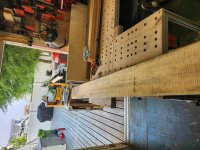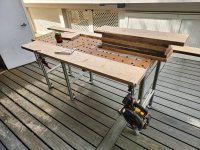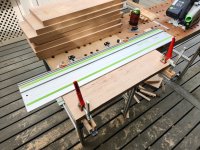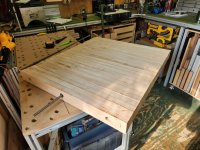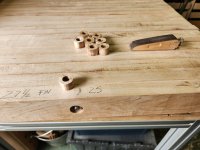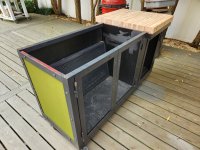rmwarren
Member
- Joined
- Jul 11, 2010
- Messages
- 3,063
Almost ready to make the 4" thick 24" by 28" butcher's block for my grill cooking cart. Amusingly, I have some 8/4 & 12/4 hard maple that I bought over 30 years ago in Nevada then hauled to PA and finally NJ where it's been waiting patiently to find its purpose in the universe. I keep wondering if it wasn't originally from this area, but I digress.
Our area (South Jersy shore) ranges from mid-80's to below freezing, and it's always at least somewhat humid. I'll keep the cart covered but it'll experience the full temp/humidity swings year-round.
I've yet to figure out if I am going to make an end-gain block (2" by 2" by 4" blocks) or just mill everything to 2" by 4" by 24" and glue the faces. Any advice on pros/cons would be appreciated.
Any thoughts on the best adhesive to use to in either scenario?
Lastly, if I take the latter approach, I could run some threaded rod thru and back up the glue mechanically. Is this enough of a benefit to make this approach superior to going the end grain route?
Thanks in advance.
RMW
Our area (South Jersy shore) ranges from mid-80's to below freezing, and it's always at least somewhat humid. I'll keep the cart covered but it'll experience the full temp/humidity swings year-round.
I've yet to figure out if I am going to make an end-gain block (2" by 2" by 4" blocks) or just mill everything to 2" by 4" by 24" and glue the faces. Any advice on pros/cons would be appreciated.
Any thoughts on the best adhesive to use to in either scenario?
Lastly, if I take the latter approach, I could run some threaded rod thru and back up the glue mechanically. Is this enough of a benefit to make this approach superior to going the end grain route?
Thanks in advance.
RMW

